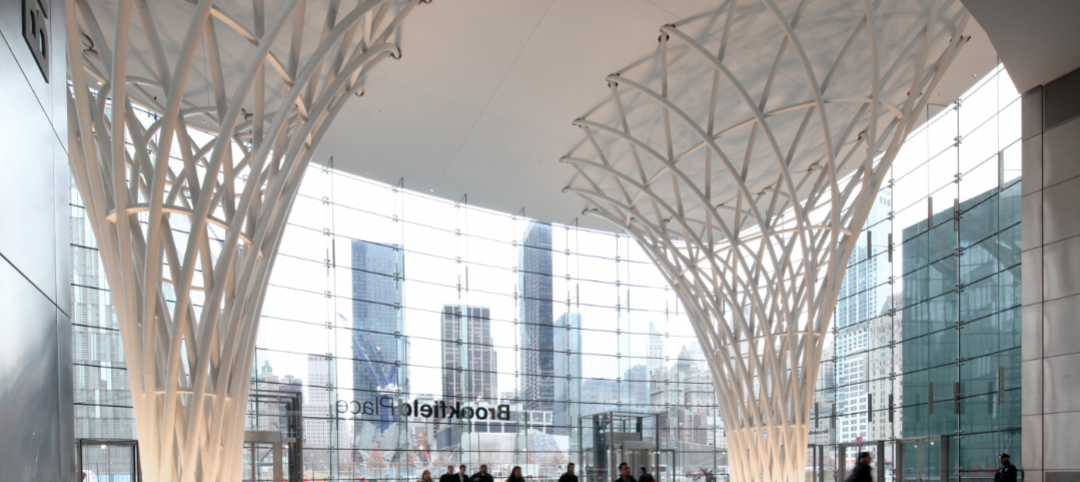The green building movement is poised on the brink of a new, more mature stage of development. Net-zero energy, net-zero water, net-zero waste, even net-zero stormwater projects—once thought to be impossible to achieve—are popping up all over. The Living Building Challenge, deemed by many practitioners to be the most arduous certification standard to meet, is winning the hearts and minds of AEC supergreenies seeking a competitive edge for their firms. And the fourth iteration of LEED, while having missed its anticipated unveiling at Greenbuild this month, should be out sometime in mid-2013.
“Green building is not a curiosity anymore,” says Aditya Ranade, Senior Analyst with Lux Research, which predicts the sector will reach $280 billion globally by 2020.
The big buzz: disclosure and transparency, says Russell Perry, FAIA, LEED Fellow, Senior Vice President with design firm SmithGroupJJR. He points to the recent release of publicly disclosed building energy use in New York City as an example of “increased visibility” that will contribute to the knowledge base on building performance.
Building product manufacturers are responding to the call for disclosure and transparency by issuing environmental product declarations to differentiate their products from the competition’s. Perry says EPDs will play a greater role in Materials & Resources credits for LEED v4.
Most recently, the International Living Future Institute launched Declare, a database of green building products (http://www.declareproducts.com) that provides a kind of “nutrition label” of product ingredients—all in support of the Living Building Challenge’s “Red List” and “Appropriate Sourcing” imperatives.
Also in the works: the Health Product Declaration Open Standard, a new “product chemistry disclosure tool” that its developers—the Healthy Building Network and BuildingGreen—say will provide manufacturers with a consistent format for reporting product content and associated health information. The HPD, which went through a pilot phase with more than 30 building product makers earlier this year, will be launched at Greenbuild.
Finally, there’s the Honest Buildings Network (www.honestbuildings.com), an open-network database that seeks to connect stakeholders in the real estate industry to “drive demand for better buildings all over the world.” Founder Riggs Kobiak calls it “a cross between Yelp and LinkedIn for the built environment.”
In the following pages, the editors present numerous highly sustainable projects, along with trends and ideas from leading AEC green building firms. +
Related Stories
Giants 400 | Aug 7, 2015
RECONSTRUCTION AEC GIANTS: Restorations breathe new life into valuable older buildings
AEC Giants discuss opportunities and complications associated with renovation, restoration, and adaptive reuse construction work.
BIM and Information Technology | Aug 6, 2015
After refueling its capital tank, WeWork acquires BIM consultant Case
The merger is expected to help standardize how WeWork designs and builds out office space.
Giants 400 | Aug 6, 2015
BIM GIANTS: Robotic reality capture, gaming systems, virtual reality—AEC Giants continue tech frenzy
Given their size, AEC Giants possess the resources and scale to research and test the bevy of software and hardware solutions on the market. Some have created internal innovation labs and fabrication shops to tinker with emerging technologies and create custom software tools. Others have formed R&D teams to test tech tools on the job site.
Giants 400 | Aug 6, 2015
GIANTS 300 REPORT: Top 115 Healthcare Architecture Firms
HDR, Stantec, and Perkins+Will top Building Design+Construction's 2015 ranking of the largest healthcare architecture and architecture/engineering firms in the U.S.
Giants 400 | Aug 6, 2015
HEALTHCARE AEC GIANTS: Hospital and medical office construction facing a slow but steady recovery
Construction of hospitals and medical offices is expected to shake off its lethargy in 2015 and recover modestly over the next several years, according to BD+C's 2015 Giants 300 report.
Codes and Standards | Aug 6, 2015
ConsensusDocs releases new CM agency contract standard agreement
For use when owner acts as the construction manager, hires a construction manager, or uses multiple prime contractors
Giants 400 | Aug 5, 2015
GIANTS 300 REPORT: Top 135 Office Sector Architecture Firms
Gensler, HOK, and Perkins+Will top BD+C's ranking of the nation's largest office sector architecture and architecture/engineering firms.
Giants 400 | Aug 5, 2015
OFFICE SECTOR GIANTS: Today’s workplace design must appeal to Millennials’ ‘activity-based’ lifestyle
Office market AEC Giants discuss the latest trends workplace design, and the state of the office construction sector.
Giants 400 | Aug 5, 2015
GIANTS 300 REPORT: Top 37 Engineering/Architecture Firms
Jacobs, AECOM, and Thornton Tomasetti head Building Design+Construction's 2015 ranking of the largest engineering/architecture firms in the United States.
Giants 400 | Aug 5, 2015
ENGINEERING GIANTS: Profits, revenue on the rise at U.S. engineering firms as economy sputters back to life
The vast majority of engineering firms are decidedly bullish on revenue growth for 2015, and profitability is nearing a six-year high, according to BD+C's 2015 Giants 300 report.

















